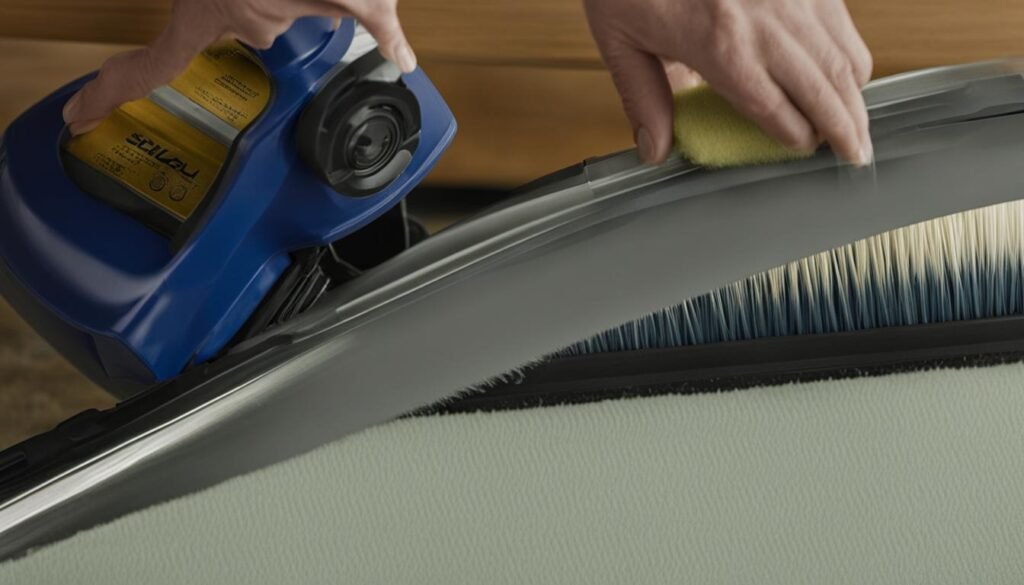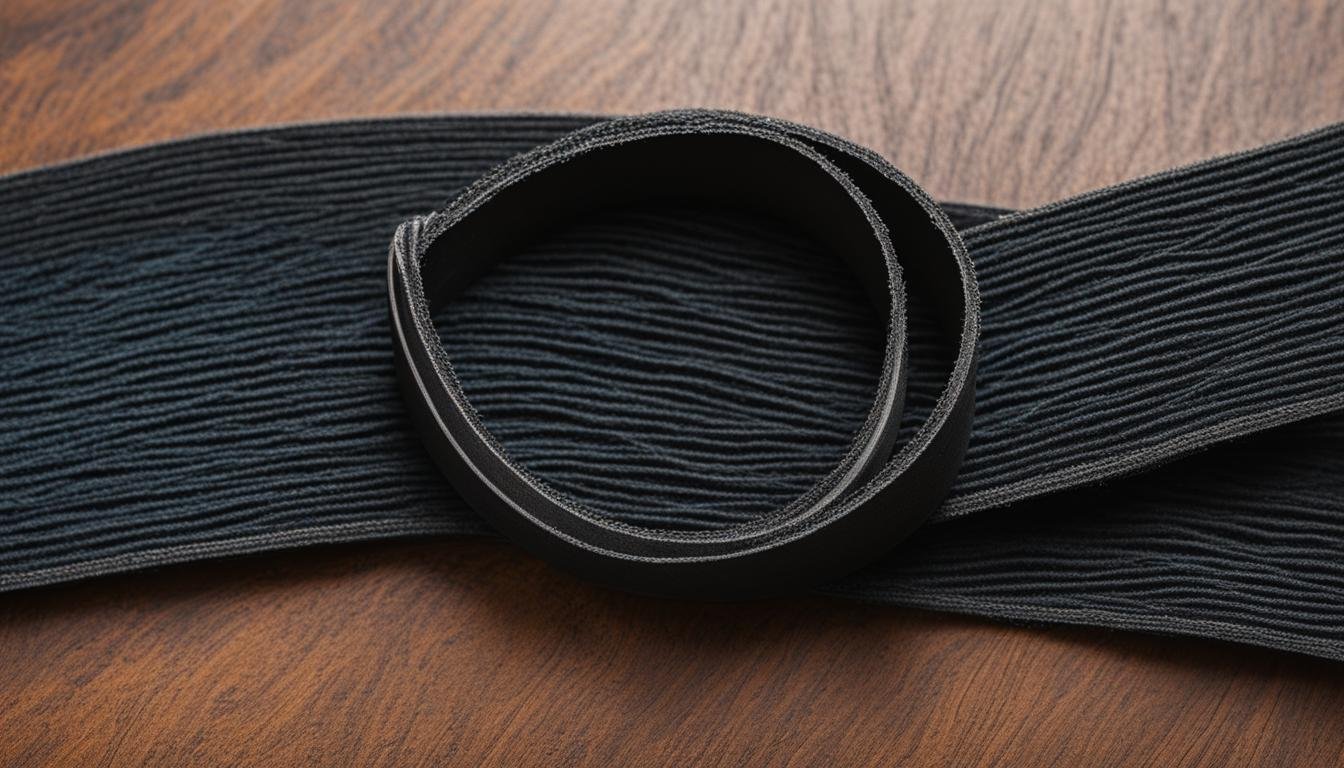When I’m cleaning my house, the last thing I want is for my vacuum cleaner belt to break. It can be frustrating and disrupt my cleaning routine. But why does this keep happening? Let’s explore the common causes of vacuum cleaner belt breakage and find out how to prevent it.
One of the main culprits is a problem with the roller brush. If the bearing is seized or the roller brush is misaligned, it can put extra strain on the belt, causing it to break. Another factor to consider is the type of belt you’re using. Generic belts might be cheaper, but they tend to stretch out quickly and are more prone to breaking.
Additionally, a dirty vacuum cleaner can contribute to belt breakage. When debris gets wrapped around the roller brush, it creates friction that can strain the belt and lead to breakage. It’s important to keep your vacuum cleaner clean and free from any obstructions that could damage the belt.
To ensure the longevity of your vacuum cleaner belt, proper installation and regular maintenance are crucial. Make sure to install the belt according to the manufacturer’s instructions, and don’t forget to change it on a regular schedule, even if it hasn’t broken yet. By addressing these common causes and taking preventive measures, you can extend the lifespan of your vacuum cleaner belt and avoid the inconvenience of frequent breakage.
Key Takeaways:
- Check the roller brush for any problems like seized bearings or misalignment that could strain the belt.
- Use genuine, durable belts designed for your vacuum cleaner model to avoid quick stretching and breakage.
- Maintain a clean vacuum cleaner, removing any debris or obstructions that could damage the belt.
- Properly install the belt according to the manufacturer’s instructions and change it regularly as a preventive measure.
- By addressing these common causes and taking preventive measures, you can extend the lifespan of your vacuum cleaner belt.
Troubleshooting Vacuum Cleaner Belts
If you are experiencing issues with your vacuum cleaner belt, there are some troubleshooting steps you can take.
First, check the roller brush to see if it is turning easily. If it is not, there may be a problem with the roller brush that needs to be addressed, such as a seized bearing or misalignment.
Replacing the Belt
It is also important to make sure you are using genuine belts that are compatible with your vacuum cleaner model. Sometimes, generic belts may stretch out quickly and lead to belt breakage.
If you have checked these factors and the belt still keeps breaking, it may be necessary to replace the entire brush roll. In some cases, it may be more cost-effective to replace the vacuum cleaner altogether.
“Using genuine, compatible belts is crucial to prevent belt breakage and extend the lifespan of your vacuum cleaner.”
Remember, troubleshooting and fixing broken vacuum cleaner belts can help you maintain the efficiency and performance of your vacuum cleaner.
| Common Troubleshooting Steps |
|---|
| Check the roller brush for any obstructions or misalignment |
| Ensure you are using genuine belts that are compatible with your vacuum cleaner model |
| If the belt keeps breaking, consider replacing the entire brush roll |
| In some cases, it may be more cost-effective to replace the vacuum cleaner altogether |
Preventing Vacuum Cleaner Belt Breakage
To prevent your vacuum cleaner belt from breaking, there are several preventive measures you can take:
- Clean your vacuum cleaner regularly by emptying the bag or trash receptacle. This helps prevent debris build-up that can cause the roller brush to stop spinning and lead to belt breakage.
- Avoid vacuuming up large objects or carpet strings. These can get tangled around the roller brush, causing friction and putting stress on the belt.
- Choose durable vacuum cleaner belts. Look for belts made from high-quality materials that are designed to withstand regular use and resist stretching and breaking.
- Have a spare belt on hand. It’s always a good idea to have a spare belt available in case the current one breaks. Replace the belt as soon as it shows signs of wear or damage to prevent further issues.
- Proper installation is key. Before installing a new belt, make sure that the motor spindle and roller brush are clean and free from debris. This ensures optimal performance and reduces the chances of belt breakage.
- Consider changing the belt on a regular schedule. Even if the belt hasn’t broken yet, it’s recommended to replace it every 6-12 months, depending on the frequency of use. This preventive maintenance helps extend the lifespan of your vacuum cleaner belts.
By following these preventive measures, you can avoid the inconvenience and frustration of vacuum cleaner belt breakage. Take care of your vacuum cleaner belts, and they will continue to serve you well.
Comparison of Vacuum Cleaner Belt Lifespan
| Brand | Material | Lifespan |
|---|---|---|
| Duravac | Nylon | 12-18 months |
| VacMaster | Rubber | 6-12 months |
| CleanMax | Poly-V | 18-24 months |
| ProVac | Polyurethane | 24-36 months |

Conclusion
Dealing with vacuum cleaner belt problems can be frustrating, but there are simple steps you can take to fix the issue and maintain your vacuum cleaner belts. By understanding the common causes of vacuum cleaner belt breakage and troubleshooting potential problems, you can prevent belt breakage and ensure the smooth and efficient operation of your vacuum cleaner.
One of the common causes of vacuum cleaner belt breakage is a problem with the roller brush. If the roller brush is not turning easily, it may be due to a seized bearing or misalignment. By checking and addressing these issues, you can prevent further damage to the belt.
Additionally, using genuine and durable vacuum cleaner belts is crucial to prevent stretching and breakage. Avoid using generic belts that may not be compatible with your vacuum cleaner model. By investing in quality belts, you can increase the lifespan of your vacuum cleaner belt.
Maintaining your vacuum cleaner and its belts is equally important. Regularly clean your vacuum cleaner, including the bag or trash receptacle, to prevent debris from wrapping around the roller brush and causing friction. It is also vital to change the belt on a regular schedule, even if it has not broken yet, to proactively prevent belt breakage.
By following these troubleshooting and maintenance tips, you can fix broken vacuum cleaner belts, prevent further belt problems, and enjoy the optimal performance of your vacuum cleaner.
FAQ
Why do my vacuum cleaner belts keep breaking?
There are several common causes for vacuum cleaner belt breakage, including problems with the roller brush, using generic belts, and a dirty vacuum cleaner.
How can I troubleshoot my vacuum cleaner belts?
To troubleshoot your vacuum cleaner belts, check the roller brush for any issues, ensure you’re using genuine belts, and consider replacing the entire brush roll if necessary.
What can I do to prevent vacuum cleaner belt breakage?
To prevent vacuum cleaner belt breakage, keep your vacuum cleaner clean, avoid vacuuming up large objects, have a spare belt on hand, install the belt properly, and change it on a regular schedule.
How can I extend the lifespan of my vacuum cleaner belts?
You can extend the lifespan of your vacuum cleaner belts by following preventive measures such as troubleshooting potential problems, using genuine and durable belts, and maintaining your vacuum cleaner properly.





Leave a Reply